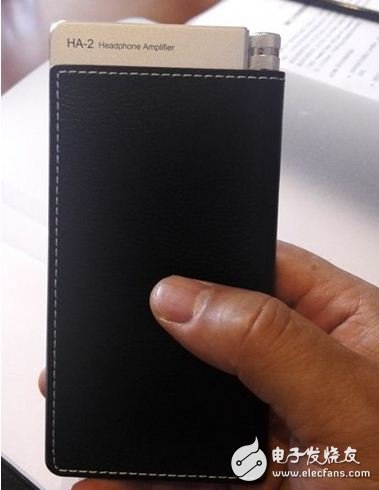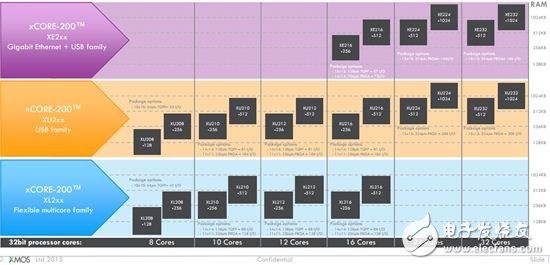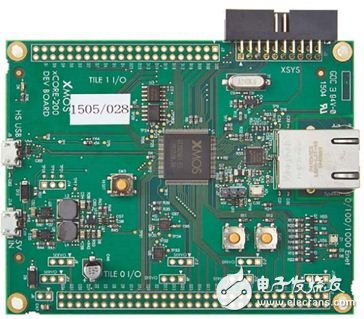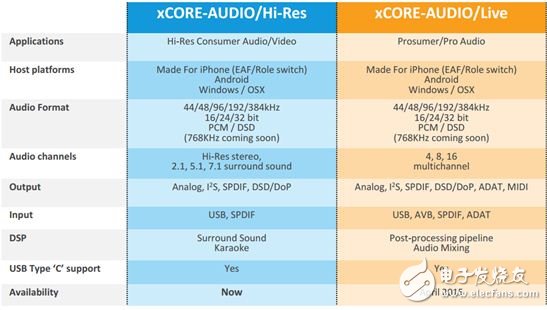Why can the xCORE-200 MCU be used for audio and industrial control?
XMOS is a company that specializes in designing audio MCUs. However, Huawei, Bosch and Xilinx made strategic investments in the company last year. We know that Huawei is focused on the communications field, Bosch is focused on the sensor field, and Xilinx products are mainly FPGAs. So why do these three companies invest in a company that specializes in audio MCU design? What are the company's product advantages? In addition, XMOS MCUs are also suitable for industrial control and real-time communication. So what is the relationship between audio players and robots and communications?
Hi-Fi player can also be price-friendlyLet's take a look at several audiophile-level audio players and amp products. The first is the desktop Hi-Fi network music player AK500N launched by South Korea's Avery and the company. Its price is $14,000. It supports playback of PCM/DSD music files up to 384kHz and 32 bits. The second is Avery's music player AK240, which costs $2,500. It also supports playback of up to 384 kHz 32-bit PCM/DSD music files.

Figure 1: South Korea's Avery and the company's desktop Hi-Fi network music player AK500N sold for $14,000.
Let's look at the third product, the OPPO's HA2 amp, which is also a high-level 384kHz/32-bit PCM audio decoder. It supports VOOC flash charging technology, and can also be used as a mobile power supply, priced at only RMB 199.

Figure 2: The OPPO HA2 amp is priced at only RMB 199, and its performance is comparable to that of Sony products.
XMOS China sales manager Zhang Shaoxiong told reporters at a recent media meeting that OPPO's product, which sells for less than 2,000 yuan, can be compared with Sony's five or six thousand similar products. Where are the similarities between these products? They all use XMOS' xCORE MCU solution.
Why can the xCORE-200 MCU be used for audio and industrial control?XMOS recently introduced its second-generation MCU product line: xCORE-200 MCU chip and xCORE-AUDIO SoC chip. Zhang Shaoxiong said that xCORE-200 is a general-purpose multi-core MCU, and xCORE-AUDIO is an xCORE-200-based SoC. The xCORE-AUDIO is the same physical layer as the xCORE-200, and the software is put into the SoC according to industry applications. xCORE is as flexible as an FPGA, and can be quickly formed and mass produced through C/C++ programming. Some domestic manufacturers use FPGAs for prototyping, which is very laborious, and xCORE-AUDIO is very fast.
The xCORE-200 has three major differences from the previous generation: higher performance, the previous series has a maximum speed of 2GHz, and the xCORE-200 has a speed of up to 4GHz; more memory, from the previous highest 512kB to the current 1MB; more flexible I/O.
The xCORE-200 is compatible with previous versions of the xCORE code and can be easily ported. The xCORE-200 is easier to use - the new tool interface has been optimized for improved compilation efficiency. In addition, it provides more IP libraries to customers and enables rapid implementation.
The xCORE-200 doubles its performance because it can run two instructions per clock cycle (through the instruction pipeline).
The xCORE-200 includes three series: XE2xx (Gigabit Ethernet + USB Series), XU2xx (USB Series) and XL2xx (Flexible Multicore Series). The XE2xx is relatively high-end, with Gigabit Ethernet and 2 USB, with a minimum of 16 cores. XU2xx covers 8 to 32 cores. The XL2xx has a maximum of only 16 cores. The TQFP package is available in all three series to facilitate soldering iron soldering. Previously, the package was BGA, which was inconvenient to debug.

Figure 3: Complete set of three series of xCORE-200.
Figure 3 shows the evaluation board eXplorerKIT for the xCORE-200. It provides 1 Gigabit Ethernet network port and 2 USB 2.0 ports. The xCORE-200 chip is based on the XE216-512-TQ128 (XE series, 16 cores, 512KB SRAM, 128-pin TQFP package) at speeds up to 2000MIPS. In addition, it has 53 available Hardware Response IO ports, 3D accelerometers and magnetometers, and 6 servo interfaces.

Figure 4: Evaluation board eXplorerKIT for the xCORE-200.
What are the applications that xCORE-200 is optimistic about?Zhang Shaoxiong pointed out that the applications that xCORE-200 is optimistic include the following aspects. The first is high-speed real-time data acquisition, because there are Gigabit Ethernet and flexible IO interfaces, which require more serial ports, CAN, Ethernet or USB, which can be implemented quickly. Real-time plus high-speed Ethernet and USB is the advantage of the xCORE-200.

Figure 5: XMOS China Sales Manager Zhang Shaoxiong introduces the advantages of xCORE-200.
The second is a service robot. In addition to industrial automation, there are more robots for home services. A XMOS customer designed a take-out robot with wheels. Domestic food delivery robots need to be laid, but it does not need (xCORE is suitable for multi-axis control and real-time communication). In addition, it is free to move around and remember locations, avoid obstacles and draw maps.
The third is IoT. Connecting relays, such as cars need to bridge CAN and Ethernet (connecting car status to big data via the Internet of Vehicles), xCORE can implement different protocols (such as CAN, Ethernet and cloud). Note: The cloud is usually connected by mobile communication module. This type of module is generally switched between USB connections. In addition, cars also use Ethernet to transmit audio and video in real time, and it can also be extended to industrial/security areas.
The fourth is a time-sensitive network.
The fifth is intelligent control and high-performance human-machine interface. For example, gesture recognition can be implemented with a multi-channel xCORE-Audio board. In principle, audio and ultrasound are much better in accuracy and real-time than infrared.
In addition, xCORE-200 provides the corresponding tool suite xTIMEcomposer, including free design and enterprise versions. The Enterprise Edition provides on-site support guarantees (XMOS engineers respond to customer questions within a certain period of time) at a price of $4,995 per year. The design is the same, mainly for large customers like Honeywell and Schneider.
xCORE-AUDIO SoC offers Turn-Key solutions
The xCORE-AUDIO SoC is essentially a xCORE-200 chip designed for HiFi-level high sample rate solutions, DSP real-time audio processing input and output, USB Audio and AVB standard applications. It focuses on lowering prices for consumer applications, such as karaoke, conferences and other products.
xCORE-AUDIO includes xCORE-AUDIO/Hi-Res and xCORE-AUDIO/Live series, supporting all platforms such as Android, iOS and Windows. xCORE-AUDIO/Hi-Res supports very high resolution, sampling rate from 44kHz to 384kHz, resolution from 16 bits to 32 bits, formatted as PCM/DSD. The number of channels includes 5.1 and 7.1 channels, and the output channels include Analog, I2S, SPDIF, and DSD/DoP. Input channels include USB and SPDIF. The DSP includes surround sound and karaoke, and other DSPs will be added later. It also supports the latest USB Type C interface. The development board uses ESS DAC to ensure the quality of the audio output.

Figure 6: Performance overview of the xCORE-AUDIO/Hi-Res and xCORE-AUDIO/Live series.
Zhang Shaoxiong said that the xCORE-200 has excellent performance and is even stronger than the ARM Cortex-M7 MCU. At the same time, it provides a development kit and free development tools. In addition, the xCORE-200 is also ideal for multi-axis motion control and real-time communication. xCORE-AUDIO is aimed at group purchase customers and can help customers quickly bring designs to market.
Infrared Pen,Infrared Touch Pen,Infrared Tablet Stylus Pen,Infrared Stylus Pencil
Shenzhen Ruidian Technology CO., Ltd , https://www.szwisonen.com